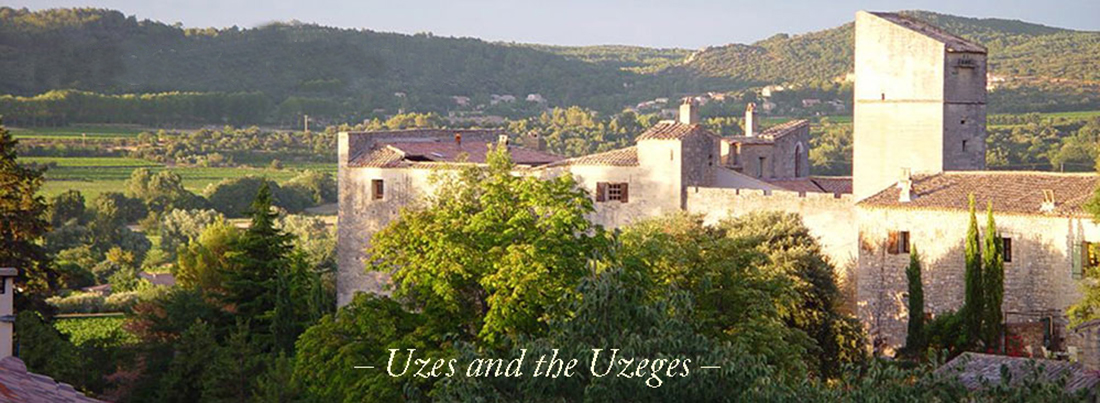
The Stunning Tarn Gorge
When people write about the Tarn Gorge, they tend to use superlatives. There’s a good reason for that.
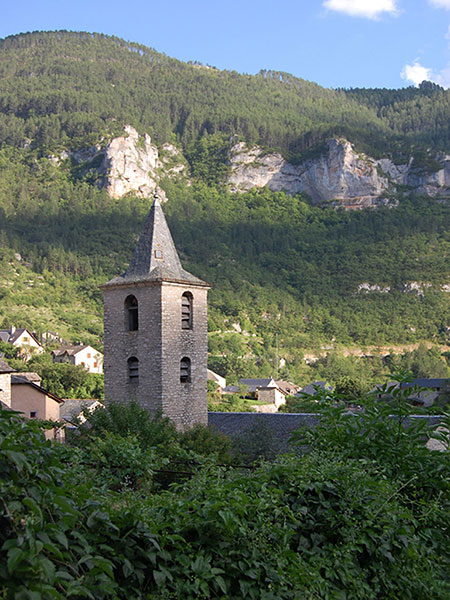
We have thus far visited Florac, stopped at Castelbouc, and now plunge into the Tarn river gorge and its national park.
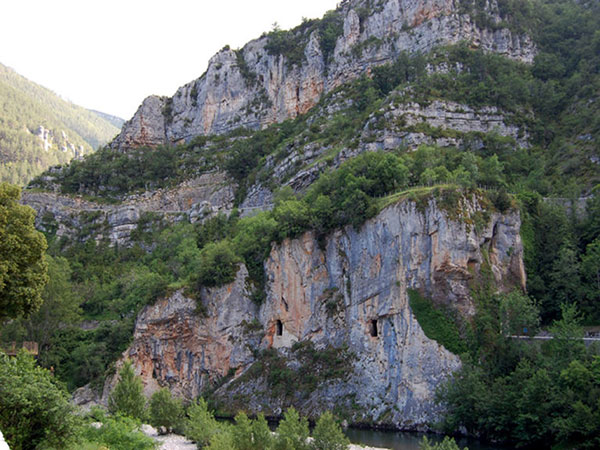
The gorge is about twenty miles long and beautiful throughout. You will see castles, beautiful villages, magnificent rock formations, and hamlets hidden across the river (one so small and isolated that the people who lived there have to leave their cars on one side of the river and take some sort of homemade funicular across the river. And there, one assumes, everyone walks.
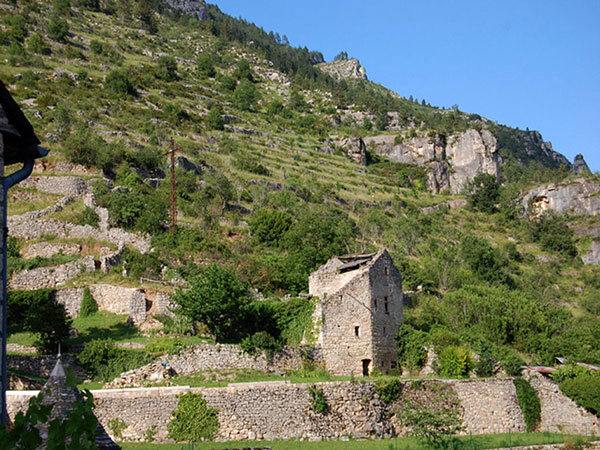
If you look closely, you will see remnants of medieval terraced gardens throughout the gorge. At that time, the gorge was much more heavily populated than it is now. But the various Wars of Religion, and the attendant looting, killing and deprivation quickly took care of that.
It’s difficult to keep your eye on the narrow strip of road, which winds like a snake in a hurry, in front of you. If it’s not the beautiful river below, it’s the steep mountainsides to both sides that pulls your attention away.
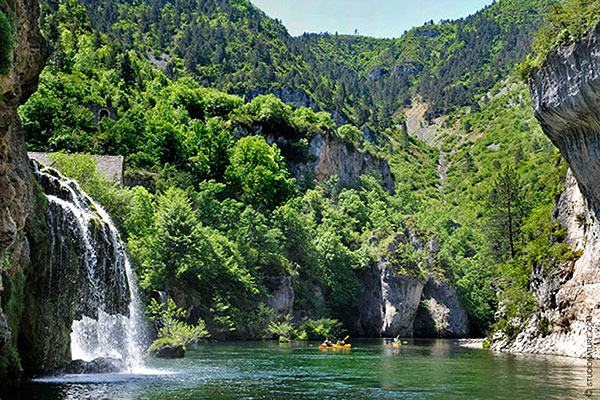
It won’t take all that long to reach St. Enimie, which warrants a stop, both to look around and to have lunch.
Seriously…how many towns have a visitor parking lot with a view like this?
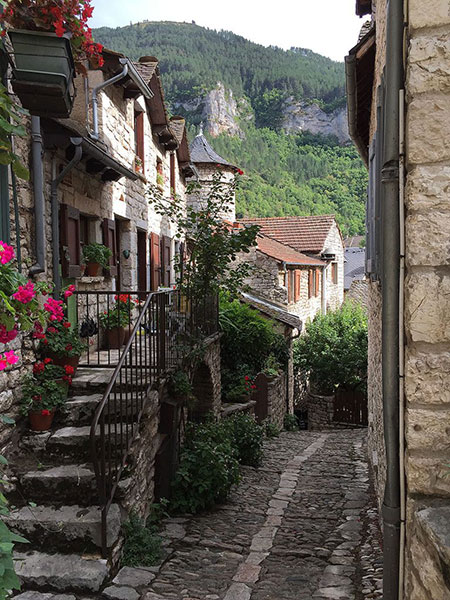
Park your car by the side of the river, enjoy a lunch with a view, and then take a slowly-paced walk through the village. Wander as you wish. Everyone else is doing the same.
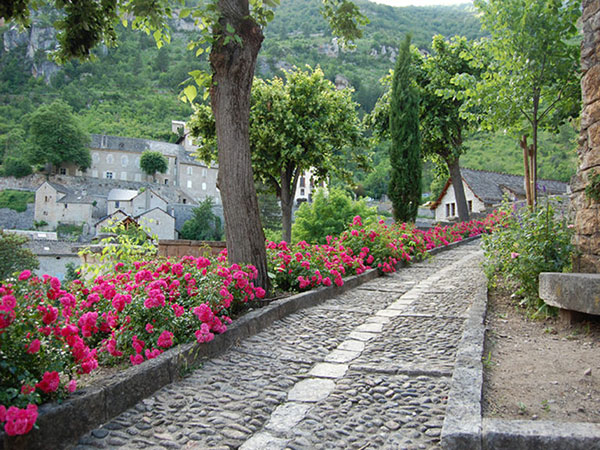

As you stroll along you may notice dried thistles that are attached to doors, or in this case, have become part of a window covering. Back home, thistles are weeds. So why would the people of St. Enimie place them on their homes?
They’re a weather indicator. If the thorny leaves begin to close, the people of St. Enimie know that it’s going to rain.
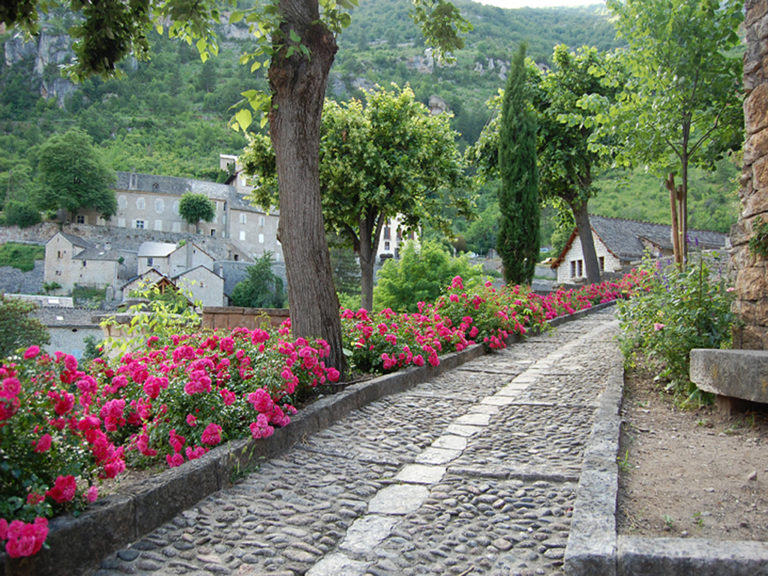
The walking tour of the town takes little more than half an hour and will bring you back to the center, near where you have parked your car.
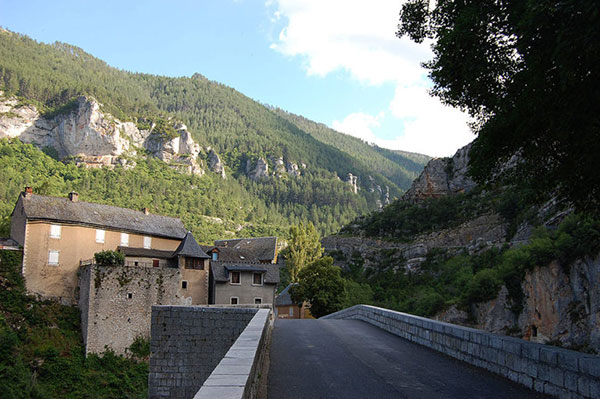
At this point, you leave the stunning Tarn gorge and drive seemingly straight up to the the wild Cause Mejean: the plateau at the top of the mountain. A drive through beautiful scenery, with a white-knuckle descent to Florac will be your reward.
TIPS:
• If at all possible, try to avoid visiting during the busiest days (July and August). If that’s not possible, come early or late; before people get their day going, or after they’re tired from the day’s adventures and are focused on dinner.
• The opposite cause, reached by driving up from St. Enimie, is every bit as wild, rugged and remote as the Cause Mejean.
• Rent a kayak and take a tour of the river. The water is crystal clear and teeming with fish.
LINKS:
From the Book:
Chapter 4: How to Ruin a Perfectly Good Marriage in Only Three Weeks
“Can you believe how much water there is around here?” Linda asked when I rejoined her and Erik.
What she said was true. The sound of water, frothing, gushing and cascading, was everywhere. Water trickled from narrow clefts in the rock and spilled into the river. High on the mountain, we were able to spot myriad waterfalls that cascaded down the cliff face. One was especially prominent, and we found that we could trace the water’s course as it worked its way down to where—we had to take a second look to make sure we weren’t mistaken—it ran beneath a house near where we had parked. Hundreds of years ago, a channel had been excavated beneath the home’s foundation and lined with stone in order to let the water flow by.
“That’s a first,” Linda admitted.
“Can I throw rocks into the river?” Erik interrupted. “I don’t want to look at houses. It’s boring.”
With any other child the answer would have been an immediate and resounding “No,” but Linda and I had long ago found our son to be preternaturally blessed with sound judgment. Most adults should be as reliable.
Erik pointed out a spot where a broad gravel shelf emerged from the water. The water’s depth there, even twenty feet out, was a matter of inches. It was more a shallow lagoon than a river, and completely safe. We nodded our assent and smiled as we watched our son walk to his chosen spot and begin collecting flat stones to skip across the water. He already seemed to be feeling at home.
We waited a while to make sure he was fine, and then took a narrow track that would bring us to the home we’d come to see. Along the way, we pointed out to each other all the beautiful things we saw: how plentiful and colorful the wildflowers were; the abundance of the green moss that clung to the stones; and the height of the mountain on the opposite bank.
